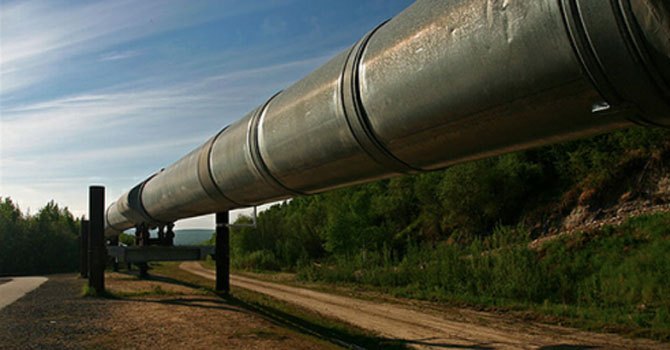
MONTREAL: North America's pipeline network must be radically redrawn with new links such as Keystone XL to meet growing Canadian oil output, or risk a blow to the country's economy, experts said.
Canada holds the world's third-largest oil reserves and has in the last decade become the sixth-largest producer due to huge investments in its Alberta tar sands.
It is also the top energy supplier to the United States, which takes in 98 per cent of Canadian oil exports, including three-quarters of its crude oil output.
But this symbiotic relationship is expected to change dramatically by 2020 when the United States is predicted to become the world's largest oil producer, according to the International Energy Agency.
With US domestic consumption also dropping, the United States would not require as much Canadian oil.
Existing pipelines were designed to funnel Canadian oil in one direction - south to its neighbor. That means lucrative new markets such as China and India are out of reach, adding further woes to Canada's economy, which relies on exports of its natural resources.
Most of the Canadian oil ends up in the US Midwest, and is now contributing to a glut in the American market, which is also experiencing a shale oil boom in the US states of North Dakota and Montana, directly across the border from the Canadian province of Alberta.
“Shale oil has gone from a negligible share of US production five years ago, to almost a third today,” explained Avery Shenfeld, chief economist at the Canadian Imperial Bank of Commerce (CIBC).
According to Charles St-Arnaud of Nomura bank in New York, “Canadian oil producers who were once seen as the main source of supply for the United States are suddenly having to compete with domestic oil that is less expensive to extract and refine".
With no other outlets for its oil, such as a proposed link to refineries in the US Gulf Coast and Texas that would allow Canadian oil to be sold in other US regional markets or shipped abroad, Canadians must accept a lower price for their oil.
Canadian Natural Resources Minister Joe Oliver has said the situation is costing the economy up to “$50 million per day.”
It is these forces that are fueling demand for new pipelines, such as TransCanada's Keystone XL's $5.3 billion proposal to build a 1,897-kilometer (1,179-mile) pipeline from Alberta to Nebraska and connecting it to a new southern leg to bring the oil to refineries in Texas.
That's in addition to four new Canadian pipelines - two from Alberta to the Pacific Coast for shipping to Asia and two to Atlantic ports and refineries.
The projects have been slammed by environmental activists who fear a spill and say oil sands extraction produces three to five times more carbon emissions than conventional oil production.
While conventional crude oil is pumped from the ground, Alberta's sticky oil must be extracted from underneath the region's coniferous forest, separated from sand and water, then upgraded and refined.
The Canadian government's refusal to tackle climate change may have hardened opposition to new pipeline projects, said St-Arnaud.
Canada produces nearly three million barrels of crude oil per day, and the industry is looking to bring that up to 4.7 million barrels by 2020 and to 6.2 million barrels by 2030.
“As it stands now, oil production in the West could soon outstrip available export capacity. If this happens, investment and expansion will grind to halt,” according to the Canada West Foundation research institute.
It's a scenario that could play out as early as 2016, according to experts, or even “in the next year,” predicted St-Arnaud.














































Dear visitor, the comments section is undergoing an overhaul and will return soon.